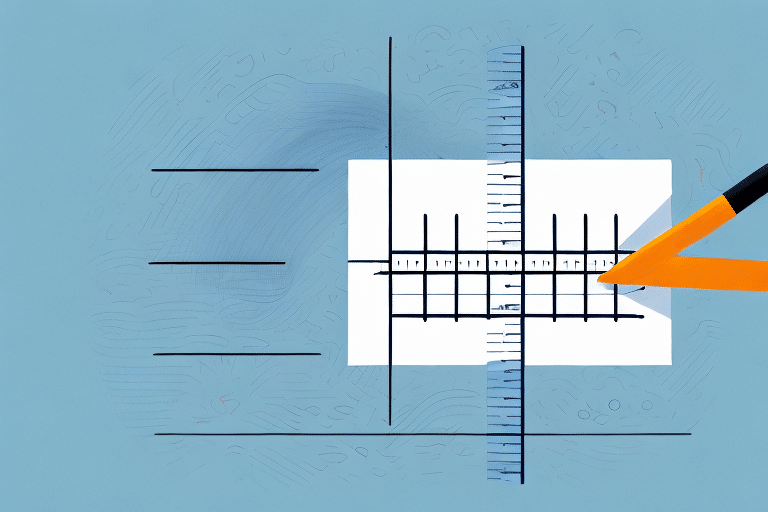What Is the Girth of a Package? Understanding Its Measurement and Importance
Every package that is shipped across the world must be measured and assessed for its size and weight. This information is crucial as it determines the shipping cost, the type of carrier that can be used, and the packaging options. One of the most critical measurements when it comes to package analysis is the girth. While the term may sound technical, it's a straightforward measurement that requires basic knowledge and skills to determine. In this article, we will explain what package girth is and why it's essential to take this measurement into account before shipping any package.
How to Measure the Girth of a Package Accurately
The girth of a package refers to the measurement of the distance around the thickest part of the package. It's different from the package’s dimensions, though they are related. To measure the girth, use the formula:
Girth = 2 × (Width + Height)For example, if a package has a width of 10 inches and a height of 5 inches, the girth would be:
Girth = 2 × (10 + 5) = 30 inchesThis measurement, combined with the package's length, determines the carrier's shipping fee. Accurate measurement is critical to avoid incorrect girth calculations and potential extra charges. Use a reliable measuring tape or tool to ensure precision. For irregular-shaped packages, multiple measurements may be necessary to obtain an accurate girth.
Tools for Measuring Package Girth
- Measuring tape
- Ruler
- Digital measuring devices
Ensure consistent units of measurement, typically inches or centimeters, as most carriers use these to calculate shipping fees. Always round up measurements to the nearest whole number to prevent discrepancies.
Girth vs. Dimensional Weight: Which One Matters More?
While girth is crucial, dimensional weight is another important metric that carriers use to evaluate and price packages. Dimensional weight is calculated by multiplying the length, width, and height of a package and dividing the result by a carrier-specific divisor. For example, FedEx uses a divisor of 139, while UPS uses 166 for domestic shipments in the U.S.
Dimensional weight ensures that carriers account for the space a package occupies, not just its actual weight. This measure prevents carriers from subsidizing the transportation of large but lightweight packages.
Comparison Table: Girth and Dimensional Weight
| Aspect | Girth | Dimensional Weight |
|---|---|---|
| Definition | Distance around the thickest part of the package | Volume-based weight calculation |
| Purpose | Determine shipping fees based on size | Adjust fees based on package volume |
| Impact | Affects carriers' ability to transport the package | Affects overall shipping cost |
Understanding both girth and dimensional weight is essential, as carriers may use either or both metrics to determine shipping fees.
The Significance of Girth in Shipping and Logistics
Girth plays a pivotal role in shipping and logistics by influencing shipping fees, carrier selection, and packaging decisions. Carriers often have maximum girth limits, and exceeding these can result in higher fees or rejection of the package.
For businesses that ship frequently, optimizing package girth can lead to significant cost savings. According to industry reports, efficient packaging can reduce shipping costs by up to 30%.
Understanding girth helps in selecting the right packaging materials and methods, ensuring compliance with carrier regulations, and enhancing overall operational efficiency.
Calculating Girth for Irregular-Shaped Packages
Irregular-shaped packages can present challenges in accurately measuring girth due to their non-uniform dimensions. To calculate girth for such packages:
- Measure the widest part of the package.
- Measure the length and any additional protruding sections.
- Add these measurements using the girth formula.
Using flexible measuring tapes and taking multiple measurements can enhance accuracy. In some cases, specialized tools or software may be employed to model and calculate girth more precisely.
Common Mistakes to Avoid When Measuring Package Girth
Accurate girth measurement is essential to avoid unexpected shipping costs. Common mistakes include:
- Mistaking dimensions for girth
- Misreading measurement tape marks
- Using incorrect formulas
- Overlooking protruding parts of the package
- Failing to double-check measurements
By being mindful of these errors, you can ensure precise girth calculations and avoid unnecessary expenses.
Reducing Package Girth to Save on Shipping Costs
Minimizing package girth is an effective strategy to lower shipping costs. Here are some methods to achieve this:
- Choose appropriate packaging materials that fit the product snugly.
- Invest in custom-fit boxes to match the item's dimensions.
- Reduce the overall size of the package without compromising product safety.
- Eliminate unnecessary packaging materials that add bulk.
- Use advanced packaging methods like vacuum sealing to compress the package.
By implementing these strategies, businesses can significantly reduce shipping expenses while maintaining product integrity.
Case Study: Cost Savings Through Reduced Girth
A mid-sized e-commerce company implemented custom-fit boxes for their products, reducing their average package girth by 15%. This change resulted in a 20% decrease in shipping costs over six months, demonstrating the financial benefits of optimizing package girth.
The Role of Girth in Shipping Costs and Fees
Girth directly impacts the shipping costs and fees associated with transporting a package. Carriers assess girth to determine the size category of the package, which influences pricing tiers. Larger girth typically results in higher shipping fees due to the increased space and handling required.
Additionally, some carriers employ dimensional weight pricing, where the calculated dimensional weight based on girth and other dimensions may surpass the actual weight, leading to higher fees. Understanding this relationship helps in strategizing packaging choices to minimize costs.
Understanding Carriers' Regulations on Package Girth
Different carriers have varying regulations regarding package girth. For instance, UPS sets a maximum girth plus length of 165 inches for most shipments, while FedEx has similar limits with slight variations.
Adhering to these regulations is crucial to ensure that your packages are accepted and delivered without delays. Always review the specific girth and dimensional weight policies of your chosen carrier before shipping.
Impact of Girth on Package Protection and Damage Prevention
Properly managing package girth not only affects shipping costs but also plays a role in protecting the contents. Packages with excessive girth may experience more movement during transit, increasing the risk of damage. Utilizing packaging materials that limit girth can enhance product protection by reducing movement and providing a more secure fit.
Research from the Council of Supply Chain Management Professionals indicates that optimized packaging can decrease product damage rates by up to 25%.
Future Trends: How Technology is Shaping Package Girth Standards
Technological advancements are continually transforming shipping and logistics, including how package girth is measured and managed. Innovations such as automated measurement systems, 3D printing for custom packaging, and drone delivery require precise girth standards to ensure compatibility and efficiency.
For example, the integration of automated measurement systems in warehouses allows for real-time girth calculations, enhancing accuracy and speed in the shipping process.
As these technologies evolve, so too will the standards and metrics related to package girth, necessitating ongoing adaptation by businesses and carriers alike.
Choosing the Right Shipping Carrier Based on Your Package's Girth
Selecting the appropriate shipping carrier involves considering girth requirements alongside other factors such as cost, speed, and service quality. Carriers like UPS and FedEx offer various services tailored to different package sizes and girths.
Evaluate carriers based on their girth and dimensional weight policies, ensuring your packages align with their requirements to avoid additional fees or delivery issues.
Utilizing comparison tools and consulting carrier guidelines can aid in making informed decisions that optimize both cost and delivery performance.
Conclusion
Girth is a critical measurement in shipping and logistics that significantly impacts shipping fees, carrier regulations, and package protection. Accurately measuring girth and understanding its relationship with dimensional weight are essential for optimizing shipping costs and ensuring the safe delivery of packages. By implementing strategies to reduce package girth and staying informed about carrier policies and technological advancements, businesses and individuals can enhance their shipping efficiency and cost-effectiveness.




















